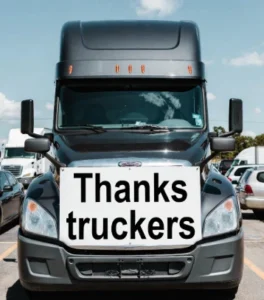California reviews pioneering warehouse regulations to improve transportation and public health policies.
California is set to implement a key revision in its warehouse regulations, a law aimed at more strictly regulating logistics activities and road transport. This modification focuses on the routes used by trucks accessing warehouses, a crucial measure to reduce traffic congestion and mitigate the negative health impacts on nearby communities.
The legislation was enacted last year by Governor Gavin Newsom, who emphasized that its primary goal is to reduce pollutant emissions and protect public health. This regulation is part of a larger effort to improve the quality of life in urban areas affected by the proliferation of logistics centers.

California warehouse regulations
Proponents of the measure argue that recent studies have indicated that heavy traffic associated with warehouses is one of the key factors contributing to health issues, such as respiratory diseases and cardiovascular problems. As a result, this measure is critical given the negative impact warehouses and truck traffic have on the health of those living near these facilities.
The 2024 law includes several key provisions to address these challenges. These include buffer zones between warehouses and what are known as “sensitive areas” (residential areas, schools, and daycare centers). Additionally, it requires trucks to use specific routes that avoid residential areas, which will help reduce traffic in populated zones.
Under this law, warehouses must be built according to strict construction standards to mitigate their effects on the environment and public health. Among other measures, the law mandates the construction of safety zones up to 30 meters around the facilities and prohibits loading docks from being adjacent to sensitive areas. It also specifies that loading zones must be located at least 500 feet from the nearest sensitive area.
The revision of these new legal norms will apply to the logistics sector across the entire state. However, they will primarily focus on California’s Inland Empire. Senator Eloise Gómez Reyes, who represents the Colton area in the Inland Empire, has warned that the state must be prepared to manage the growth of the logistics sector, not just in terms of infrastructure but also in regard to the health and well-being of its communities.
Amendments to California’s warehouse regulations
The amendments to warehouse regulations approved a year ago will go into effect on January 1, 2026. As the implementation date draws nearer, concerns have been raised about the burden these changes may impose on communities and the sectors involved. In response, Senator Reyes and Assemblymember Juan Carrillo have introduced new bills to clarify certain aspects of the legislation.
Carrillo emphasized that the 2024 law seeks to maintain a balance between protecting the quality of life in communities and the need to continue fostering the economic growth of the logistics sector, which creates thousands of jobs in the state. However, he acknowledged that significant challenges remain, and that the law requires adjustments to be fully effective.
This clarification is part of a broader effort to ensure that regulations are clear and applicable across the entire state. The proposal, which is already on the governor’s desk for signing, represents an important step toward a more sustainable logistics model that is respectful of the health and well-being of California communities.

The strangest Black Friday purchases: from funny to nothing
Fueled by the adrenaline of the moment and the excitement of scoring big discounts, many shoppers have ended up buying unusual items during Black Friday.

Young drivers wanted, older drivers needed: the industry’s biggest dilemma
The road transportation industry remains at a crossroads in its efforts to recruit young drivers, but the workforce keeps aging and seeking retirement. The road

Thanksgiving, Black Friday and the Long Weekend: America Moves Because Trucks Never Stop
Thanksgiving, Black Friday and the Long Weekend: America Moves Because Trucks Never Stop

Thankful for the Drivers Who Keep America Moving This Thanksgiving
Thankful for the Drivers Who Keep America Moving: The Invisible Work Behind One of the Busiest Thanksgiving Seasons

Preparing for Thanksgiving travel: best and worst times to travel
Whether you are a truck driver, a traveler, or simply someone who needs to move around during these days, we share essential information to help

Cargo theft spikes during Thanksgiving: how to stay safe
Every year during Thanksgiving, cargo theft poses a serious threat to the trucking industry, and this year will be no exception. Every year during Thanksgiving,
All content and original artwork, unless otherwise noted, is protected by copyright. Saint George uses certain images under license from various licensing vendors for this purpose. Any unauthorized commercial reproduction or distribution of copyrighted materials is prohibited.
